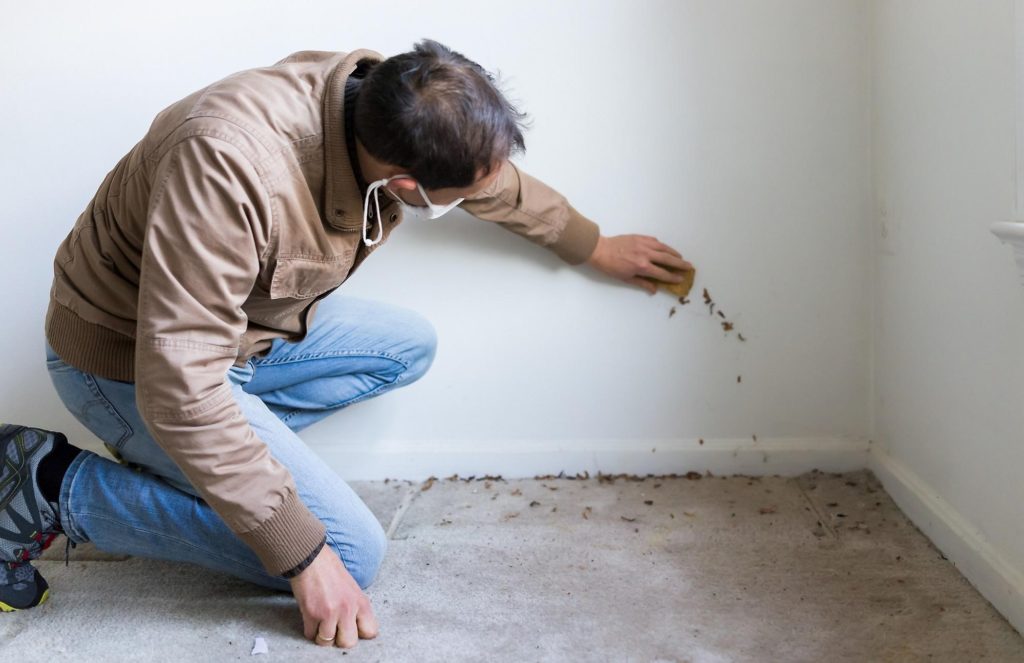If a leak or poor ventilation affects a property, this can lead to mould or serious damp problems. You may have attempted to eliminate mould with cleaning products, but if the problem persists, the best course of action would be to book a damp survey from a specialist who is able to assess the extent of the damage and establish a suitable solution for addressing the problem and preventing further damage.
In this blog, we look at how to prepare for a damp survey before providing insights into exactly what these assessments consist of.
How to prepare for a damp survey
There are several different types of survey, with each falling into a specific category. For instance, a valuation report is used by a mortgage lender to determine the value of a property, a condition report applies to newly-built properties, and a building survey – or full-structural survey – is a thorough analysis used by people selling their property to show complete transparency to prospective buyers. A damp survey is used specifically for assessing potential areas of damp within a property, as well as any rot or structural problems this may have caused.
Although these surveys differ from one another, they have similarities. For example, they typically take around three to four hours to complete and require the same preparation to be successfully carried out by the surveyor.
As the owner or landlord, you will be required to empty the property as much as possible or at least ensure that walls and ceilings are clear for the surveyor to conduct the necessary checks. It’s also best if you can prevent any pets, children or other adults from getting in the way of the surveyor as they work. Every room in the property should be accessible to the surveyor and any relevant documentation should be provided and on show.
The key to a successful damp survey is to be completely honest and show total transparency to the surveyor. By working with them to find a solution, you will be able to fix the problem. Depending on why you have arranged the survey, you may be tempted to underplay or even cover up the extent of the dampness problem in the property, but as this will not solve the issue and will simply hinder the surveyor and the survey process, this is not advisable.

What happens during a damp survey?
A surveyor will often start by looking over the outside of the property to determine the structure and overall condition. In order for a damp survey to be carried out on a property, the specialist surveyor will need as much information as possible. When the specialist arrives at the property, they will ask questions to the owner about the damp problem. This includes the type of problem, the severity, whether it’s spread or worsened over a specific period of time and any other issues that could affect the process of assessing and eliminating it.
Once all the necessary information has been gathered, the surveyor will look through the property to find any signs of damp or issues that could potentially cause damp in the future. During this process, they will analyse the structure of the building, such as the materials used to build the walls and whether there’s been any attempt to damp-proof the property. At the inspection stage various items will be looked at due to these being common causes of leaks that lead to dampness including:
- Exterior cracks in the walls
- Gaps around windows
- Doors
- Walls
- The roof
- Damaged or poorly fitted water pipes
When the surveyor has completed these checks, they can start inspecting the internal dampness. The priority will be the area specified by the property owner, but they will also monitor for early signs of dampness elsewhere.
A selection of tools may be used, with a damp meter being the most common. This device has a number of modes and can inspect the entirety of every wall on the property, identify damp patches that haven’t yet shown through on the walls and formulate a moisture profile to determine a cause and treatment. The surveyor will then create a report of their findings which will include proposed solutions and an estimate for how much the work will cost.
How to get a damp survey
To get a damp survey through Ideal Response, you can book an appointment by calling 01622 926 505 to arrange a date and time that suits you. At this point, all you need to supply is your name (and company name if applicable), the address of the property, specific details of the problem and a contact email address.
Alternatively, if you’d prefer to explain the damp problem more thoroughly, you can also request a damp survey online. By doing it in this way, you can explain the problem you’re having more specifically and provide images. However you get in touch, we will provide a free, no obligation estimate.



